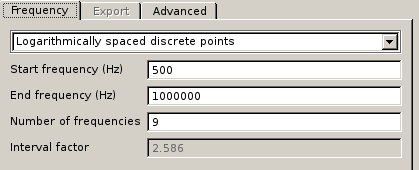こんにちは,
I solved a model in FEKO that consisted of two coils excited by current source of 1uA@60Hz. The idea is let EM waves be produced from symmetric coils, and penetrate inside a spherical body made of both dielectrics, and metal. I got near fields for a single frequency of 60Hz. I intend to simulate an aperiodic time pulse that looks like:

In Solution frequency dialog box, I put up following values:

After solution is obtained, I can create New time signal in POSTFEKO, by specifying values in dialog box below:

I simulated part of biphasic pulse with a Gaussian pulse. Spectrum preview shows that frequencies should be 0-3.5kHz.

I specified solution frequency of 500Hz-1MHz, and spectrum preview shows lower frequency of 0kHz. I can't put in start frequency as 0Hz because that becomes DC.
- Is part of biphasic time-domain signal correctly simulated?
- Is choice of logarithmicaIly spaced discrete points correct?
- Should I change frequency sweep to 0-3.5kHz?
非常感谢你,
FieldForcer